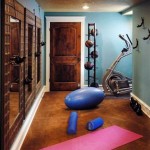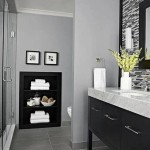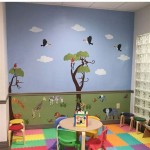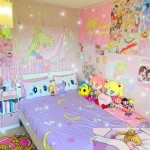Small Sitting Area Decor Ideas
The creation of a comfortable and inviting sitting area, regardless of its size, presents a compelling design challenge. In smaller spaces, meticulous planning and thoughtful execution are paramount to maximizing functionality and aesthetic appeal. Effective small sitting area décor involves a strategic blend of furniture selection, color palettes, lighting solutions, and accessory integration. The goal is to create a space that feels both spacious and intimate, serving as a welcoming retreat for relaxation and conversation.
Consideration of spatial limitations necessitates a departure from conventional design approaches often employed in larger rooms. Every element must be carefully chosen to contribute to the overall harmony of the space without overwhelming it. From space-saving furniture to cleverly placed mirrors, the techniques for optimizing a small sitting area are diverse and adaptable to various personal styles.
Before embarking on the decoration process, a thorough assessment of the available space is crucial. This assessment involves measuring the dimensions of the area, noting the placement of windows and doors, and identifying any existing architectural features that may influence the design. Understanding the natural light available is also critical, as it will impact the selection of colors and materials. A detailed plan serves as a roadmap, guiding the decisions related to furniture placement, color schemes, and accessory selection.
Strategic Furniture Selection
The selection of furniture is arguably the most critical aspect of decorating a small sitting area. Opting for smaller-scale pieces is essential to prevent the space from feeling cramped. Instead of a large, bulky sofa, consider a loveseat or a compact sectional. Armchairs should also be chosen carefully, prioritizing those with a streamlined design and a smaller footprint.
Multi-functional furniture is particularly valuable in small spaces. Pieces that serve dual purposes, such as a coffee table with built-in storage or an ottoman that can double as extra seating, maximize utility without sacrificing valuable floor space. Nesting tables are another excellent option, as they can be easily stowed away when not needed.
Wall-mounted shelving units are an effective way to provide storage without occupying floor space. These shelves can be used to display books, decorative items, or plants, adding visual interest to the room while keeping clutter at bay. Floating shelves, in particular, create a sense of lightness and airiness, further enhancing the feeling of spaciousness.
When choosing furniture, pay close attention to the scale and proportion of each piece. Avoid selecting items that are too large or too small for the space. A well-proportioned room feels balanced and harmonious, while mismatched scales can create a sense of unease. Use painter’s tape to map out the dimensions of furniture on the floor before making a purchase to ensure it fits comfortably within the available space.
Upholstery choices can also impact the perceived size of the room. Lighter colors and fabrics tend to make a space feel larger and more open, while darker colors can make it feel smaller and more intimate. Consider using fabrics with a subtle texture or pattern to add visual interest without overwhelming the space. Avoid overly busy or intricate patterns, as these can make a small room feel cluttered.
Optimizing Color and Lighting
Color and lighting play a crucial role in shaping the ambiance and perceived size of a small sitting area. Lighter, brighter colors reflect more light, making the room feel larger and more open. Neutral tones, such as white, beige, and gray, are excellent choices for the walls, as they provide a versatile backdrop for layering in bolder colors and textures through furniture and accessories.
While neutral colors are ideal for the walls, incorporating pops of color can add personality and visual interest to the space. This can be achieved through accent pillows, throws, artwork, or decorative objects. Choose colors that complement each other and create a harmonious palette. Consider using a color wheel to guide your selection, opting for analogous or complementary colors.
Proper lighting is essential for creating a welcoming and functional sitting area. A combination of ambient, task, and accent lighting is ideal. Ambient lighting provides overall illumination for the room, while task lighting focuses on specific areas, such as reading nooks or work spaces. Accent lighting highlights architectural features or decorative objects, adding depth and dimension to the space.
Natural light is a valuable asset in any room, but particularly in a small space. Maximize natural light by keeping windows clear and unobstructed. Avoid using heavy curtains or blinds that block out sunlight. Instead, opt for sheer curtains or blinds that allow light to filter through while providing privacy.
Mirrors are a powerful tool for creating the illusion of space. Placing a large mirror on a wall can visually double the size of the room. Mirrors also reflect light, making the space feel brighter and more open. Consider placing a mirror across from a window to maximize the amount of natural light in the room.
Avoid using overhead lighting alone, as this can create harsh shadows and make the room feel smaller and less inviting. Instead, incorporate a variety of lighting sources at different heights, such as table lamps, floor lamps, and sconces. This creates a more layered and dynamic lighting scheme that enhances the overall ambiance of the space.
Clever Accessory Integration
Accessories are the finishing touches that add personality and style to a sitting area. However, in a small space, it is important to be selective and avoid cluttering the room with too many items. Choose accessories that are both functional and decorative, and that complement the overall design scheme.
Artwork is a great way to add visual interest to a small sitting area. Consider using a large piece of artwork as a focal point on one wall. Alternatively, create a gallery wall with a collection of smaller prints and photographs. When hanging artwork, be mindful of the scale and proportion of the pieces in relation to the wall space.
Plants can bring life and vibrancy to a small sitting area. Choose plants that are well-suited to the lighting conditions in the room. Low-maintenance plants, such as succulents and snake plants, are a good option for those who are not experienced gardeners. Hanging plants are also a great way to add greenery without taking up floor space.
Rugs can define the seating area and anchor the furniture arrangement. Choose a rug that is large enough to fit under the front legs of the sofa and armchairs. This will create a cohesive and unified look. Rugs with subtle patterns or textures can add visual interest without overwhelming the space.
Throw pillows and blankets are a simple and affordable way to add color, texture, and comfort to a sitting area. Choose pillows and blankets in a variety of sizes, shapes, and materials. Mix and match patterns and colors to create a visually appealing arrangement. Consider using pillows with removable covers so that you can easily change them out to update the look of the room.
Storage baskets and decorative boxes are a practical way to keep clutter at bay. Use these to store magazines, remote controls, and other small items that tend to accumulate in a sitting area. Choose baskets and boxes that complement the overall design scheme and add a touch of style to the room.
Wall décor that offers functionality enhances the space considerably. A decorative mirror not only brightens the room but also expands the visual dimensions. Shelving units, in various styles from rustic wood to modern metal, provide opportunities to display treasured items while keeping the area organized.
Minimizing visual clutter is essential in a small sitting area. Avoid displaying too many knick-knacks or decorative objects. Instead, curate a collection of a few carefully chosen items that have personal significance or aesthetic appeal. Arrange these items in a way that is visually pleasing and does not feel cluttered.
Regularly decluttering the sitting area is important to maintaining a sense of spaciousness and order. Remove any items that are no longer needed or used. This will help to keep the space feeling fresh and inviting.
In essence, decorating a small sitting area requires a meticulous approach that prioritizes functionality, visual harmony, and personal style. By selecting furniture strategically, optimizing color and lighting, and integrating accessories thoughtfully, a small space can be transformed into a comfortable and inviting retreat.

Small Living Room Design Ideas
:max_bytes(150000):strip_icc()/154844841_1913837928767303_4703053855314656226_n-7776f09f3d67417caf5a7bd062c1acd1.jpg?strip=all)
52 Small Living Room Ideas To Maximize Space And Style

8 Decorating Ideas For Styling A Small Living Room Ruggable Blog

Small Living Room Ideas How To Design At The Best Use Of Space Décor Aid
:max_bytes(150000):strip_icc()/Mercedes-White-Small-Living-Room-58a8c6dc3df78c345b35e545.jpg?strip=all)
15 Simple Small Living Room Ideas For Minimalist Style

15 Small Living Room Design Ideas You Ll Want To Steal
:strip_icc()/cdn.cliqueinc.com__cache__posts__191613__small-living-room-ideas-191613-1508788709787-main.700x0c-8486970faf2041b3accfa446712a0281.jpg?strip=all)
35 Designer Approved Small Living Room Ideas

How To Decorate A Small Living Room Forbes Home
:strip_icc()/KatieHodgesDesign-d6dee6ce11ac4a4ea5fdc0af03d4b382.jpg?strip=all)
35 Designer Approved Small Living Room Ideas

20 Stunning Rooms That Were Made For Small Living Room Decor Furniture Arrangement







